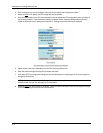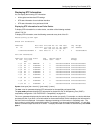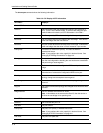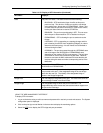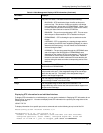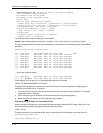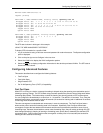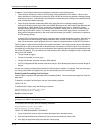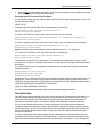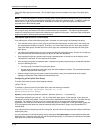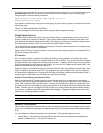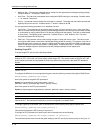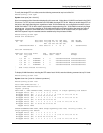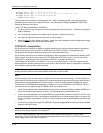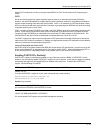
Installation and Getting Started Guide
In addition, Fast Port Span enhances overall network performance in the following ways:
• Fast Port Span reduces the number of STP topology change notifications on the network. When an end
station attached to a Fast Span port comes up or down, the HP device does not generate a topology change
notification for the port. In this situation, the notification is unnecessary since a change in the state of the host
does not affect the network’s topology.
• Fast Port Span eliminates unnecessary MAC cache aging that can be caused by topology change
notifications. Bridging devices age out the learned MAC addresses in their MAC caches if the addresses are
unrefreshed for a given period of time, sometimes called the MAC aging interval. When STP sends a
topology change notification, devices that receive the notification use the value of the STP forward delay to
quickly age out their MAC caches. For example, if a device’s normal MAC aging interval is 5 minutes, the
aging interval changes temporarily to the value of the forward delay (for example, 15 seconds) in response to
an STP topology change.
In normal STP, the accelerated cache aging occurs even when a single host goes up or down. Because Fast
Port Span does not send a topology change notification when a host on a Fast Port Span port goes up or
down, the unnecessary cache aging that can occur in these circumstances under normal STP is eliminated.
Fast Port Span is a system-wide parameter and is enabled by default. Thus, when you boot a device with software
release 06.6.05 or later, all the ports that are attached only to end stations run Fast Port Span. For ports that are
not eligible for Fast Port Span, such as ports connected to other networking devices, the device automatically uses
the normal STP settings. If a port matches any of the following criteria, the port is ineligible for Fast Port Span and
uses normal STP instead:
• The port is 802.1q tagged
• The port is a member of a trunk group
• The port has learned more than one active MAC address
• An STP Configuration BPDU has been received on the port, thus indicating the presence of another bridge on
the port.
You also can explicitly exclude individual ports from Fast Port Span if needed. For example, if the only uplink ports
for a wiring closet switch are Gigabit ports, you can exclude the ports from Fast Port Span.
Disabling and Re-enabling Fast Port Span
Fast Port Span is a system-wide parameter and is enabled by default. Thus all ports that are eligible for Fast Port
Span use it.
To disable or re-enable Fast Port Span, use one of the following methods.
USING THE CLI
To disable Fast Port Span, enter the following commands:
HP9300(config)# no fast port-span
HP9300(config)# write memory
Syntax: [no] fast port-span
NOTE: The fast port-span command has additional parameters that let you exclude specific ports. These
parameters are shown in the following section.
To re-enable Fast Port Span, enter the following commands:
HP9300(config)# fast port-span
HP9300(config)# write memory
USING THE WEB MANAGEMENT INTERFACE
1. Log on to the device using a valid user name and password for read-write access.
2. Click the Fast checkbox next to Spanning Tree to remove the checkmark from the box.
3. Click Apply to apply the change to the device’s running-config.
5 - 14



